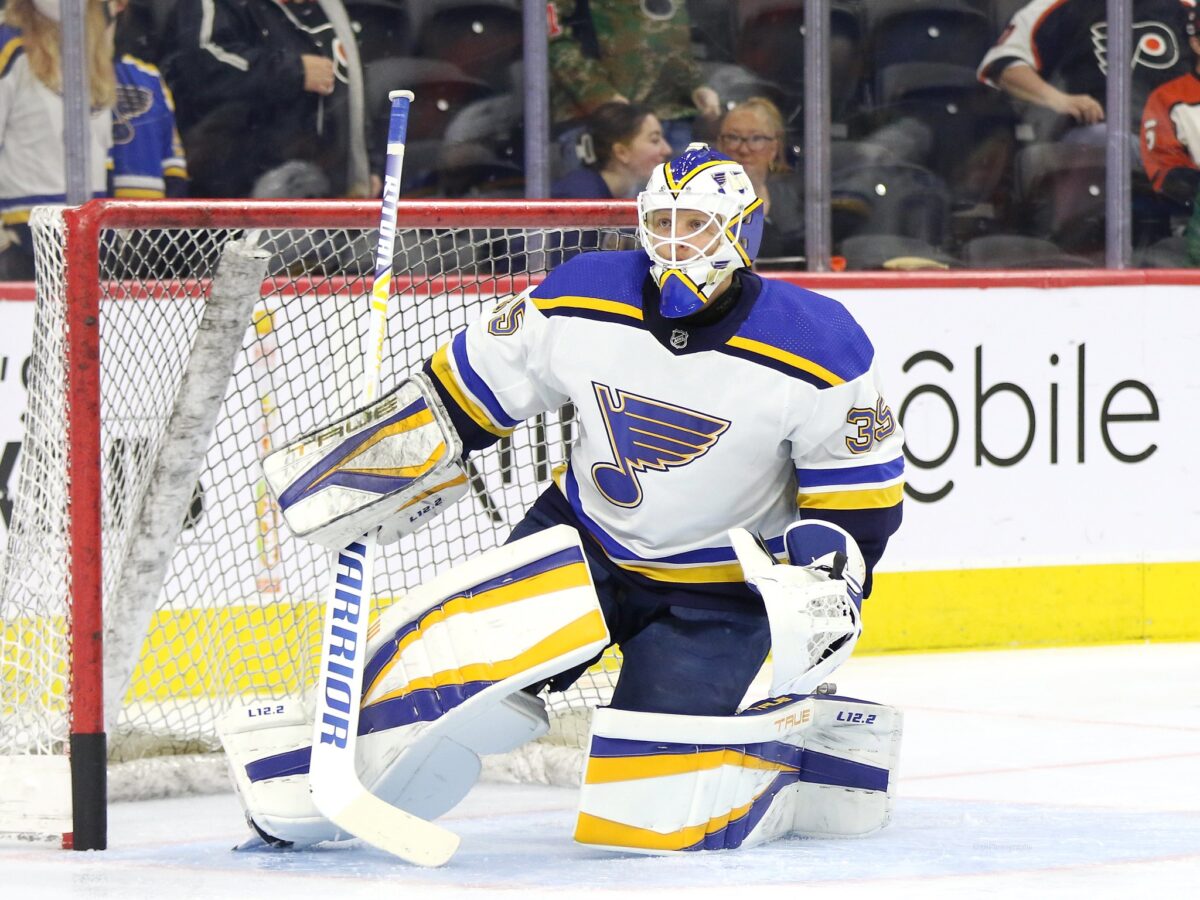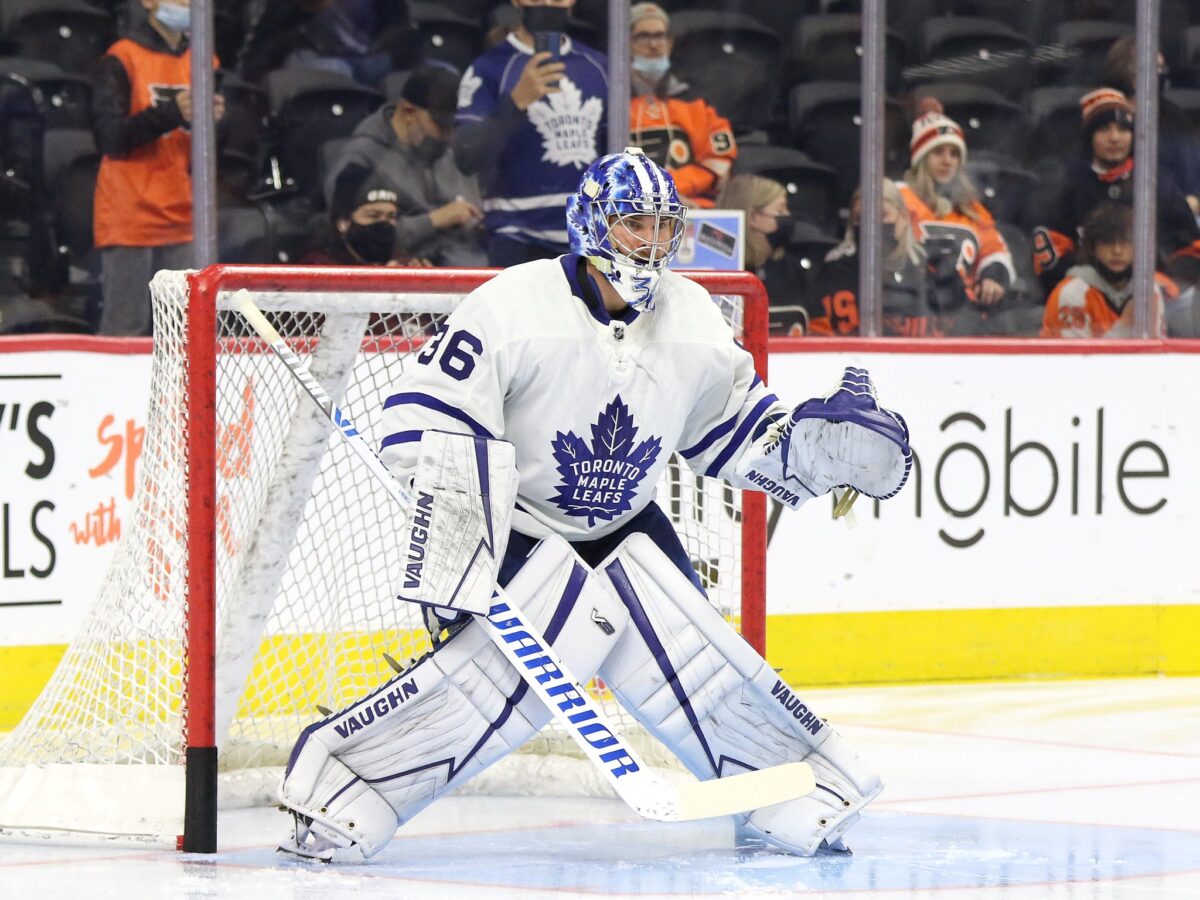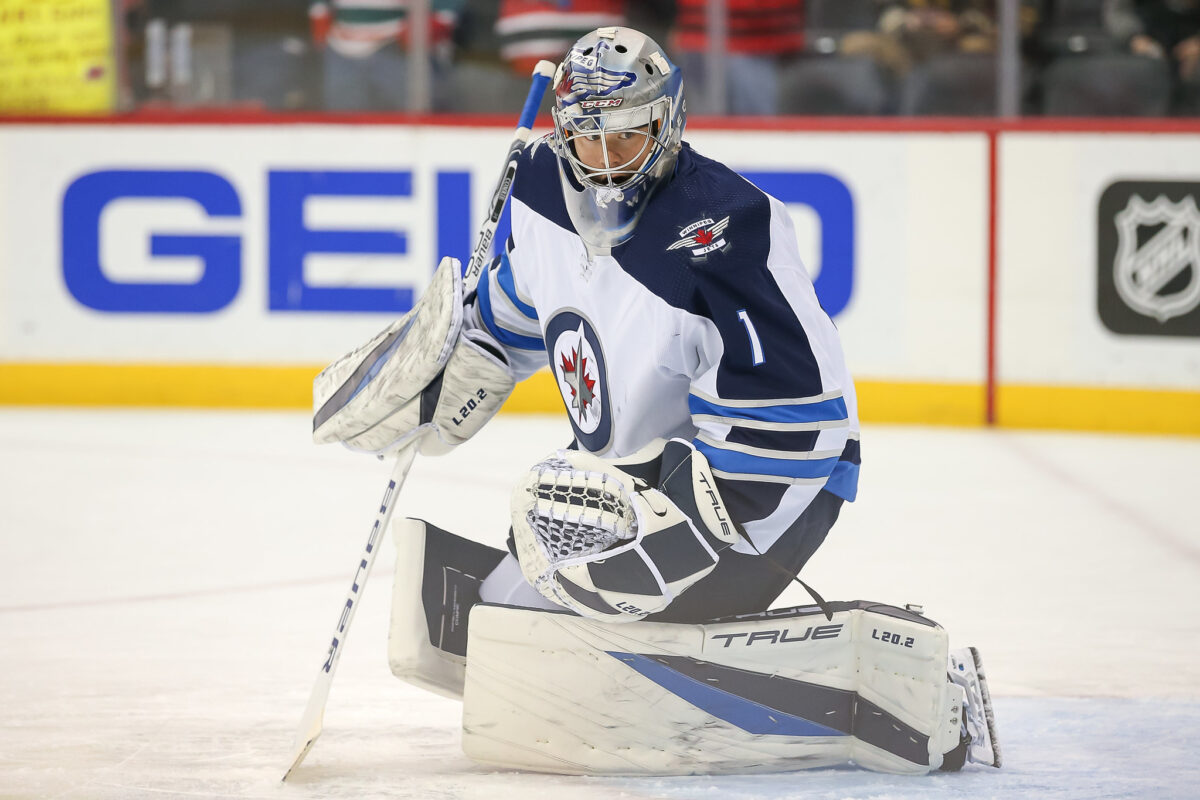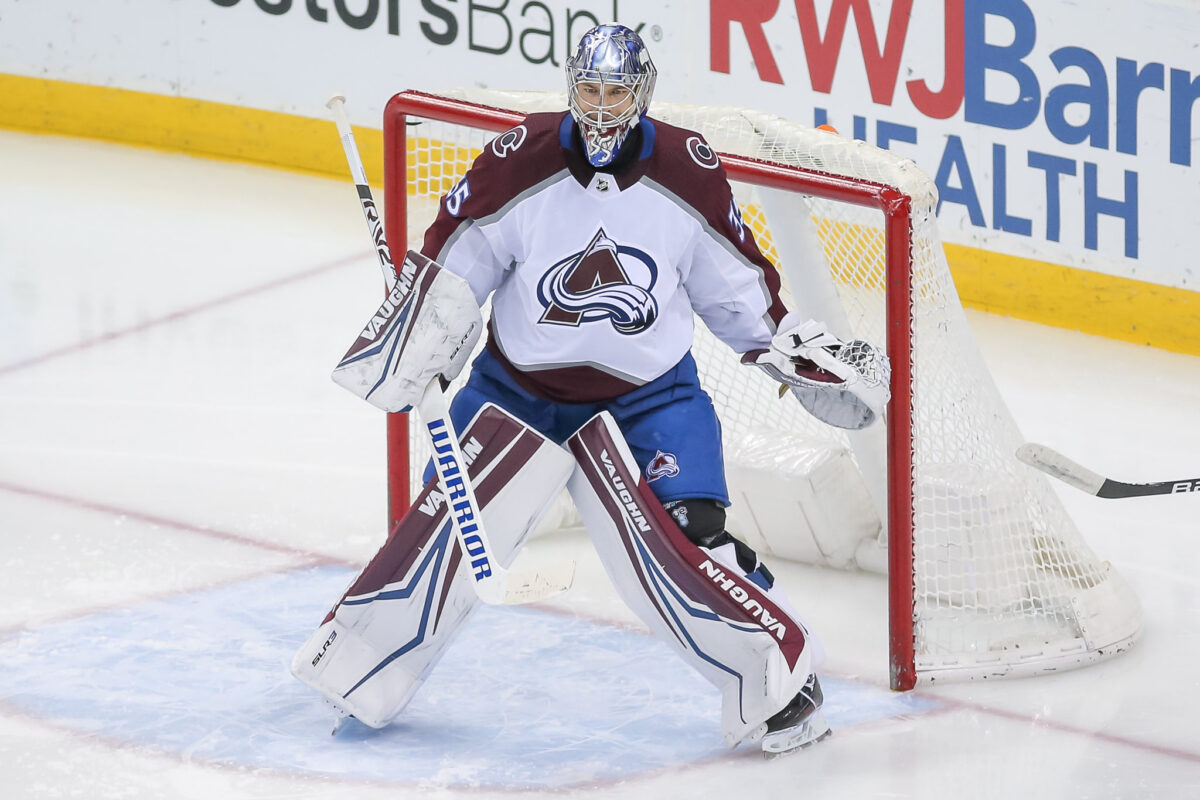We’re a little over a month away from the start of free agency on July 13. The New Jersey Devils will likely want to address a few needs when the market opens at noon, but it’s no doubt goaltending could be priority No. 1. Unfortunately, unlike the last couple of years, it’s a relatively weak class for free-agent netminders. Still, there should be a few options for the Devils and general manager Tom Fitzgerald to consider on July 13, assuming these goaltenders make it to free agency without re-signing with their respective teams.
Ville Husso
After a below-average 2020-21 season, Husso had a breakout year in 2021-22, finishing with a .919 save percentage (SV%) in 40 games. That’s after totaling an .893 SV% in 17 games a year ago. Husso got off to a hot start this season, and though he did cool down in the second half, his ten-game rolling SV% shows a goalie who fared quite well:
- Games 1-10: .933 SV%
- 10-20: .938 SV%
- 20-30: .898 SV%
- 30-40: .910 SV%
Aside from games 20-30, Husso got the job done. His goals saved above expected (GSAx) of 14.18 ranked seventh among all netminders this season and was ahead of Connor Hellebuyck, Juuse Saros and Thatcher Demko, to name a few. The question with Husso is, how good is he? He only has 57 games in his NHL career, but he has succeeded at other pro levels.

As a prospect playing in the Liiga, Finland’s top pro league, Husso posted an SV% no lower than .915 as HIFK’s starter across 111 games from 2013 to 2016. He also posted save percentages above .920 in his first two AHL seasons before struggling with injuries in 2018-19. If he didn’t have an injury, he would’ve gotten the call-up to the St. Louis Blues instead of Jordan Binnington.
Husso turned 27 years old in February, so he may be finding his footing after struggling with injuries in his mid-20s. There’s certainly risk in signing him, even on a short-term deal, given the lack of experience. But perhaps the Devils’ pro scouts are confident in his ability to repeat his 2021-22.
Casey DeSmith
DeSmith isn’t a household name, but he has been one of the more reliable backups during his four-year NHL career. He’s spent his entire career with the Pittsburgh Penguins, where he has a .915 SV% in 96 games. After spending the 2019-20 campaign in the AHL, he found his way back to the NHL last season. He hasn’t looked back since then, totaling a .913 SV% in 46 games.
Overall, DeSmith has solid underlying numbers. He has a career SV% of .926 at five-on-five, ranked 16th-best for goalies with 1000-plus minutes at that game state since the start of 2017-18. That’s to go along with a 9.19 GSAx too. Per Evolving-Hockey, he projects to land a two-year deal worth $2.664 million per year, so the Devils would have no trouble fitting him into their salary cap.
Related: Devils Shouldn’t Pursue Forsberg in Free Agency
DeSmith would be an upgrade to what the Devils got from their goalies in 2021-22; they had a team SV% of .881. But can he handle a bit more of a workload than he got in Pittsburgh? If the Devils plan to run it back with Mackenzie Blackwood, they will need someone who can play around 40 games rather than the 25 to 30 DeSmith has gotten in Pittsburgh over the last two seasons. He’s also coming off core surgery, and given the injury problems the Devils had in net this season, that may give them second thoughts about DeSmith.
Jack Campbell
At 30 years old, Campbell has finally emerged as a 1A option in net after being a highly-touted prospect who was the 11th overall pick at the 2010 draft. In his last two-plus seasons with the Toronto Maple Leafs, he’s posted a .916 SV% across 77 games. Before then, as a backup with the Los Angeles Kings, he had posted a .918 SV% in 57 games.

Campbell first started to catch people’s eyes during the COVID-shortened 2020-21 campaign when he had a .921 SV% in 22 starts for the Maple Leafs. He outplayed Frederik Andersen, who had struggled with injuries, and took the job from him. Campbell finished this past season with a .914 SV%, though there were some ups and downs when looking at his rolling ten-game SV%:
- Games 1-10: .936 SV%
- 11-20: .947 SV%
- 21-30: .894 SV%
- 31-40: .877 SV%
- 40-49: .915 SV%
The middle of the season was not kind to Campbell. With that said, he missed most of March with a rib injury. When he returned (game 40), he finished with a .915 SV% and was in good form over his final nine starts. It’s unknown how long his rib injury was bothering him, but it could’ve been a factor in his mid-season struggles when he was below a .900 SV%. That stretch is also likely why he finished with a minus-8.18 GSAx; it was plus-5 in 2020-21.
It’s safe to say Campbell is in line for a significant pay raise from his $1.65 million cap hit; Evolving-Hockey projects him to land a six-year deal at a cap hit of $5.726 million. Long gone are the days of giving goalies that much term in free agency, so six years seems like a stretch. The more probable scenario is Campbell landing a three-year contract, which comes with a projected cap hit of $5.563 million. That would be the most money the Devils pay a goalie since they re-signed Cory Schneider to an extension worth $6 million per year in 2014. But given how dire the situation is in net, that might be a price the Devils and Fitzgerald are willing to pay for an upgrade.
Eric Comrie
Devils fans might remember Comrie. He made a start for the team during the COVID-shortened season against the Buffalo Sabres, a 5-3 win, when he made 30 saves on 33 shots on goal. It was the lone start he made for the team after they claimed him off waivers from the Winnipeg Jets. They’d place him back on waivers soon after the win, where the Jets would reclaim him.

With Laurent Brossoit moving on to the Vegas Golden Knights for the 2021-22 season, Comrie took over the backup role behind Hellebuyck. Though Brossoit is a solid backup in his own right, the Jets didn’t feel the loss, as Comrie was terrific. He finished with a .920 SV% and 9.89 GSAx in 19 games, and his five-on-five SV% of .936 ranked first in the NHL for goalies with at least 500 minutes logged at that game state.
Like DeSmith, the question is can Comrie handle a more significant workload? This season was his first full one in the NHL, so there’s no way to know until you test him. But that’s a risk if the plan is to run it back with Blackwood. If the Devils acquire an established 1A through a trade and the plan is to move on from Blackwood, then Comrie could make sense as a backup.
Darcy Kuemper
Last but not least, there’s Kuemper. The Colorado Avalanche acquired Kuemper from the Arizona Coyotes last offseason to be their No. 1 starter after letting Philip Grubauer walk in free agency. That ended up being the right decision, as Kuemper finished the regular season with a .921 SV% and 15.77 GSAx, the latter of which was sixth in the league and just ahead of Husso.
Over the last three seasons, Kuemper has totaled a .920 SV% and 23.53 GSAx. The only goalies with a better GSAx over that stretch are Hellebuyck, Igor Shesterkin and Ilya Sorokin. He’s a borderline elite netminder, despite some struggles in the playoffs this year. It’s fair to wonder if those struggles are from an eye injury he suffered in the first round of the playoffs against the Nashville Predators. If that’s the case, I wouldn’t be concerned, assuming there are no long-term effects.
Given that the Avalanche are on the brink of heading to the Stanley Cup, one would assume they’d want to retain him, given what he accomplished this season. But if they choose to look for a bit of a cheaper option, the Devils should consider signing Kuemper.

Even though Kuemper will probably cost north of $6 million annually, even on a three-year deal, he has the best track record among this summer’s UFA goalies. The only concern is he does have an injury history; he played only 56 games combined in the NHL’s two COVID-shortened seasons.
With that said, the Devils would have a 1A/1B tandem with him and Blackwood. Assuming Blackwood is healthy and can actually provide league-average to above-average goaltending as he did before the pandemic, the Devils can go with a 50/50 or 55/45 split between the two netminders to manage their workloads. There’s no doubt Kuemper would provide the biggest upgrade to the Devils in net. It’s just a matter if they’re willing to go above $6 million a year for a goalie, given some of the other needs they have to address.
Devils Don’t Have Margin for Error
Unlike the last two offseasons when the Devils signed Corey Crawford and Jonathan Bernier, there aren’t as many sure options available in free agency. Bernier is under contract for 2022-23, but it wouldn’t be a surprise if he at least starts on long-term injured reserve (LTIR) after undergoing hip surgery in December. That means the Devils and Fitzgerald have to get a goalie given the injury, but there isn’t an option that comes without risk.
Campbell and Kuemper are the most likely to provide an upgrade, but both are on the wrong side of 30 and will cost quite a bit of money to sign. Husso had a great 2021-22, but you’re betting on upside and that his season wasn’t a fluke. DeSmith and Comrie are intriguing options, but only if Fitzgerald blows up the whole tandem and swings big in a trade for a top-tier netminder. It’s not a great situation to be in, given the dire need for a goalie, but Fitzgerald has no margin for error. He has to make the right call in acquiring a goalie because it could make a significant difference for the team in 2022-23.
* * *
Advanced stats from Natural Stat Trick, Evolving-Hockey; contract projections from Evolving-Hockey